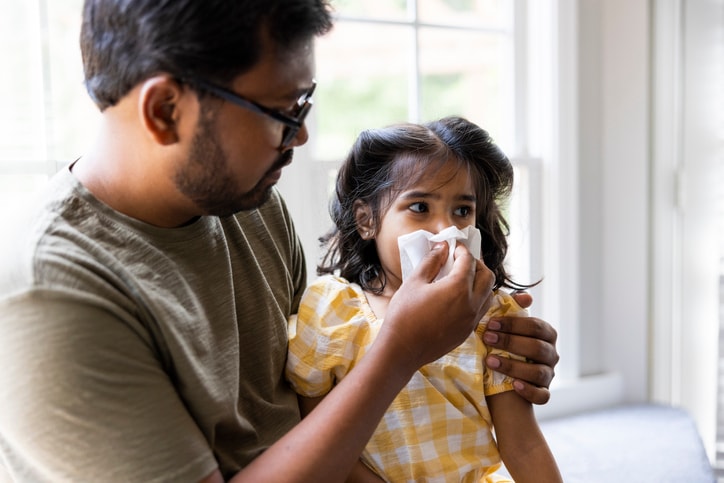COVID restrictions may be lifted, but that hasn’t put an end to disruptions and chronic absences at school. As we head into the later half of fall and the start of winter, parents and school officials are now struggling to keep kids in class due to widespread outbreaks of Respiratory Syncytial Virus (RSV) and the flu.
Where are schools closing due to illness?
Schools in Union County, Indiana are the most recent example of administrators struggling to keep up with staggering rates of illness among students and staff. On November 7, WEHT reports that Union County Schools remained closed for an extended weekend due to the number of teachers out sick.
Just days earlier, on November 4, Lynchburg-Clay Local Schools and Williamstown Independent Schools in Ohio also cancelled classes. Lynchburg-Clay district officials told WXIX more than 90 students and several staff members had called in sick.
School closures have been ramping up since at least the last two weeks of October. On October 24, an elementary school in Decatur, Alabama, switched to virtual classes, citing illness-related absences of nearly 100 students and 30% of their staff. That same week, Aquadale Elementary and South Stanly Middle Schools in North Carolina also announced two days of remote learning to “mitigate the spread of the illness.”
At one temporarily closed private school in Baton Rouge, Louisiana, it was reported that one-fourth of students and one-fifth of teachers were out sick with the flu.
Why are so many kids getting sick?
Pandemic closures and restrictions halted the spread of many respiratory infections, like RSV and the flu, but lifting restrictions has allowed many viruses to circulate freely again. Beginning in early October, doctors warned of a surge in hospitalizations for respiratory infections. Respiratory illnesses are common throughout the fall and winter months, so a high number of cases isn’t necessarily unusual, but it’s not yet clear why more kids seem to be experiencing severe illness.
On November 4, the Centers for Disease Control and Prevention (CDC) issued a health alert warning that high rates of hospitalization for RSV and the flu could overwhelm health systems this fall and winter.
The New York Times reports that close to one in every 500 babies 6 months and younger was hospitalized with RSV since the beginning of October, according to their assessment of preliminary data from the CDC.
In addition to the high number of RSV cases, many states are also experiencing a sharp increase in cases of the flu. The Walgreens Flu Index, which broadcasts weekly updates on nationwide flu infections, indicates high flu activity throughout several states in the south, midwest and on the east coast.
How to prevent respiratory infections in kids
In light of the high rates of illness among kids, some doctors are advocating for a return to indoor masking. Dr. Tatiana Prowell, an internist and oncologist with Johns Hopkins Medicine in Maryland, tells parents on Twitter, “I would strongly encourage you to have your kids return to masking at school. Between RSV and influenza, as well as COVID-19, pediatrician offices, ERs and children’s hospitals are overwhelmed.”
The AAP says other ways to prevent respiratory infections include:
- Frequent handwashing.
- Cleaning surfaces.
- Avoiding person-to-person contact with sick people.
- Limiting exposure to crowds.
- Getting a flu vaccine.
Currently, there is no vaccine for RSV, though Pfizer-BioNTech announced last week that it will be seeking approval for a new RSV vaccine by the end of 2022.






